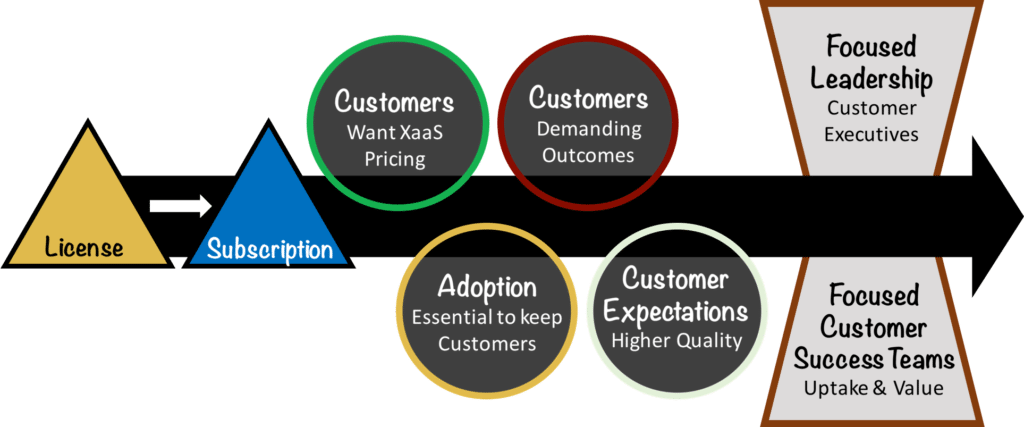The Emergence of the Chief Customer Officer
Business trends and changes in technology have created new perspectives on how companies view their customer service teams. To better understand future trends, we should look closer at the evolution of the Everything as a Service (XaaS) model. Xaas is a term that stands for “X as a Service” and refers to several technologies. The “X” has been referred to as either “anything” or “everything as a service. The acronym refers to an increasing number of services that are delivered over the internet rather than provided locally or on-site. XaaS is the essence of cloud computing. There are many gray areas when you analyze the three basic XaaS models.
- Software as a Service (SaaS) Provides ability to use on-demand software that is provided by a service provider via a thin client device. i.e web browser over the internet.
- Platform as a Service (PaaS) Provides the capability to have applications deployed without the burden and cost of buying and managing the hardware and software.
- Infrastructure as a Service (IaaS) Provides a service so that the IaaS consumer does not deal with technology infrastructure, instead the responsibility of the equipment is outsourced to a Service Provider that is responsible for running and maintaining the equipment.
In recent years, additional XaaS providers have emerged to cover Communications, Monitoring, Networks, Storage and Business Process.
Impact on Service and Organizational Structures
The traditional method of pricing for service contracts or licensing has shifted to a more flexible subscription model. Customer don’t necessarily want to own your product, they are demanding outcomes for what it can do to improve their business. Full adoption of your solution is essential to keep them as customers and nothing less than high quality has become the norm. Consequently, service organizations must adapt as leadership implements a more client focused strategy. In order to facilitate this new business model, two prominent organizational changes have occurred. The first is the emergence of the Customer Success teams closely followed by the appointment of a customer focused executive leadership position, The Chief Customer Officer.
The Customer Success Team
In the XaaS business, the Customer Success Teams help manage the whole subscription process from marketing, initial sale and on through to renewal. More importantly, Customer Success plays a huge role in helping expand revenue, drive end user adoption, reduce churn rates and identify advocates for businesses using the XaaS platform. The skill set within the Customer Success team go way beyond the typical technical support role. Good relationship, business acumen and being the client advocate are also essential for ongoing success. The three key performance indicators for Customer Success Teams are:
- Enable vendors to grow their recurring revenue through retention
- Help end users get more value out of the software through adoption
- Assist in growing revenue by shrinking churn and increasing upsell and cross sell opportunities.
The Chief Customer Office (CCO)
As CEO’s begin to realize the full potential of service and its impact on long term company prosperity, they are investing the necessary dollars, technologies and people resources to implement a customer success strategy. To reinforce this commitment, they are appointing a Chief Customer officer to their “C” level executive team. The Chief Customer Officer is responsible for the customer experience for the entire company, not just the service team. The CCO is also responsible for:
- Increasing a profitable customer base with improved loyalty, greater wallet share and decreased operational costs.
- Building a corporate customer-centric culture by aligning all employees and resources to better meet customer needs.
- Aligning critical tools, technology, process and resources to maximize opportunities to ensure customer are truly successful.
Pure SaaS companies such as Salesforce.com have been pioneering this new business paradigm. Many of the traditional software companies are transitioning their on-premise software products into the cloud and are in the process of converting their pricing from licenses to the subscription model. In addition, they are re-evaluating their organization structures to accommodate the shifting demands of customer service. Many other industries outside of the Cloud and Software can learn and adopt lessons learnt from the XaaS outcome based service model.

Leave a Comment